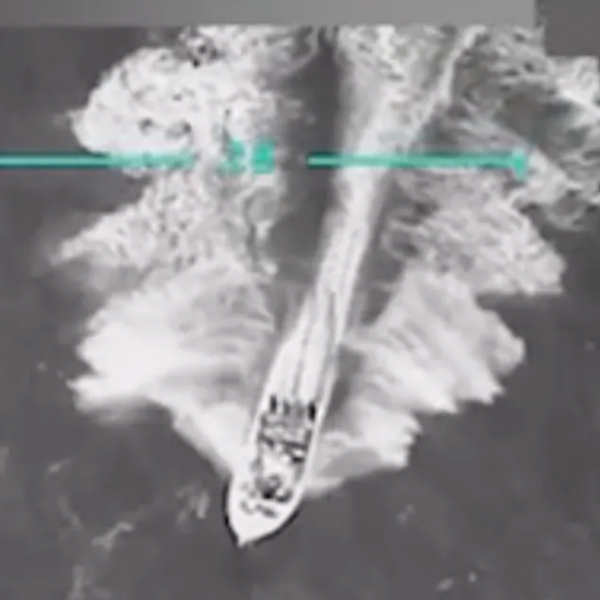Keystone XL is an Easy Terror Target Says Retired Navy SEAL Chief
Seal Team 6 commander commissioned by hedge fund billionaire Tom Steyer to conduct 'threat assessment' to tar sands pipeline
Hedge fund billionaire and staunch opponent of Keystone XL Tom Steyer has hired a retired Navy SEAL chief to conduct a "threat assessment" of the proposed northern leg of TransCanada's tar sands pipeline.
Released Wednesday, the report was conducted by Dave Cooper, a former Booz Allen Hamilton consultant and retired Command Master Chief of the Naval Special Warfare Development Group, known to most as the infamous SEAL Team 6 that killed Osama bin Laden. Cooper was officially commissioned by NextGen Climate, the environmental group led by Steyer.
In his assessment, Cooper--who spent nearly 10 years determining similar threats and targets in Iraq and Afghanistan--concludes that the tar sands pipeline would be an easy terror target and that such an attack would "wreak havoc" on the landscape it is set to pass through.
In what Cooper deems "the most likely scenario," a single attack could result in the spill of 1.2 million gallons of "highly toxic" tar sands dilbit. A coordinated attack at multiple locations could trigger the "catastrophic spill" of 7.24 million gallons. And, in the most damaging scenario, a coordinated attack across dozens of miles of pipeline with explosions at several pump stations could result in 60 percent of the oil in those sections to spill.
Using TransCanada's own estimates, Cooper calculated that it would take the pipeline company eleven and a half minutes to stop the flow in the event of such an attack.
According to Climate Progress's reporting on the assessment,
[Cooper] conducted a "red cell scenario" analysis of a domestic pipeline's security vulnerabilities, accessing only the information available to someone with an internet connection and no inside knowledge from TransCanada or government. This involved a site visit to one existing pipeline -- Keystone 1 -- to ascertain how easy it would be for someone to gain access to a completed Keystone XL pipeline. This was done as a "cold shot," meaning a mock penetration of a target with no practice or notification and very little planning. Cooper just went to the small town of Scranton, Nebraska and walked up to the pipeline.
He wrote that he was able to "stand at a Keystone 1 pump station for over 15 minutes snapping photos," and "was not approached, questioned, or ever noticed."
The report recommends that the government conduct a security assessment before permitting the construction of any pipeline. It concludes, "No pipeline, no matter how small, can ever be completely secured," adding, "this is particularly true for a pipeline the size of Keystone XL."
_____________________
An Urgent Message From Our Co-Founder
Dear Common Dreams reader, The U.S. is on a fast track to authoritarianism like nothing I've ever seen. Meanwhile, corporate news outlets are utterly capitulating to Trump, twisting their coverage to avoid drawing his ire while lining up to stuff cash in his pockets. That's why I believe that Common Dreams is doing the best and most consequential reporting that we've ever done. Our small but mighty team is a progressive reporting powerhouse, covering the news every day that the corporate media never will. Our mission has always been simple: To inform. To inspire. And to ignite change for the common good. Now here's the key piece that I want all our readers to understand: None of this would be possible without your financial support. That's not just some fundraising cliche. It's the absolute and literal truth. We don't accept corporate advertising and never will. We don't have a paywall because we don't think people should be blocked from critical news based on their ability to pay. Everything we do is funded by the donations of readers like you. Will you donate now to help power the nonprofit, independent reporting of Common Dreams? Thank you for being a vital member of our community. Together, we can keep independent journalism alive when it’s needed most. - Craig Brown, Co-founder |
Hedge fund billionaire and staunch opponent of Keystone XL Tom Steyer has hired a retired Navy SEAL chief to conduct a "threat assessment" of the proposed northern leg of TransCanada's tar sands pipeline.
Released Wednesday, the report was conducted by Dave Cooper, a former Booz Allen Hamilton consultant and retired Command Master Chief of the Naval Special Warfare Development Group, known to most as the infamous SEAL Team 6 that killed Osama bin Laden. Cooper was officially commissioned by NextGen Climate, the environmental group led by Steyer.
In his assessment, Cooper--who spent nearly 10 years determining similar threats and targets in Iraq and Afghanistan--concludes that the tar sands pipeline would be an easy terror target and that such an attack would "wreak havoc" on the landscape it is set to pass through.
In what Cooper deems "the most likely scenario," a single attack could result in the spill of 1.2 million gallons of "highly toxic" tar sands dilbit. A coordinated attack at multiple locations could trigger the "catastrophic spill" of 7.24 million gallons. And, in the most damaging scenario, a coordinated attack across dozens of miles of pipeline with explosions at several pump stations could result in 60 percent of the oil in those sections to spill.
Using TransCanada's own estimates, Cooper calculated that it would take the pipeline company eleven and a half minutes to stop the flow in the event of such an attack.
According to Climate Progress's reporting on the assessment,
[Cooper] conducted a "red cell scenario" analysis of a domestic pipeline's security vulnerabilities, accessing only the information available to someone with an internet connection and no inside knowledge from TransCanada or government. This involved a site visit to one existing pipeline -- Keystone 1 -- to ascertain how easy it would be for someone to gain access to a completed Keystone XL pipeline. This was done as a "cold shot," meaning a mock penetration of a target with no practice or notification and very little planning. Cooper just went to the small town of Scranton, Nebraska and walked up to the pipeline.
He wrote that he was able to "stand at a Keystone 1 pump station for over 15 minutes snapping photos," and "was not approached, questioned, or ever noticed."
The report recommends that the government conduct a security assessment before permitting the construction of any pipeline. It concludes, "No pipeline, no matter how small, can ever be completely secured," adding, "this is particularly true for a pipeline the size of Keystone XL."
_____________________
Hedge fund billionaire and staunch opponent of Keystone XL Tom Steyer has hired a retired Navy SEAL chief to conduct a "threat assessment" of the proposed northern leg of TransCanada's tar sands pipeline.
Released Wednesday, the report was conducted by Dave Cooper, a former Booz Allen Hamilton consultant and retired Command Master Chief of the Naval Special Warfare Development Group, known to most as the infamous SEAL Team 6 that killed Osama bin Laden. Cooper was officially commissioned by NextGen Climate, the environmental group led by Steyer.
In his assessment, Cooper--who spent nearly 10 years determining similar threats and targets in Iraq and Afghanistan--concludes that the tar sands pipeline would be an easy terror target and that such an attack would "wreak havoc" on the landscape it is set to pass through.
In what Cooper deems "the most likely scenario," a single attack could result in the spill of 1.2 million gallons of "highly toxic" tar sands dilbit. A coordinated attack at multiple locations could trigger the "catastrophic spill" of 7.24 million gallons. And, in the most damaging scenario, a coordinated attack across dozens of miles of pipeline with explosions at several pump stations could result in 60 percent of the oil in those sections to spill.
Using TransCanada's own estimates, Cooper calculated that it would take the pipeline company eleven and a half minutes to stop the flow in the event of such an attack.
According to Climate Progress's reporting on the assessment,
[Cooper] conducted a "red cell scenario" analysis of a domestic pipeline's security vulnerabilities, accessing only the information available to someone with an internet connection and no inside knowledge from TransCanada or government. This involved a site visit to one existing pipeline -- Keystone 1 -- to ascertain how easy it would be for someone to gain access to a completed Keystone XL pipeline. This was done as a "cold shot," meaning a mock penetration of a target with no practice or notification and very little planning. Cooper just went to the small town of Scranton, Nebraska and walked up to the pipeline.
He wrote that he was able to "stand at a Keystone 1 pump station for over 15 minutes snapping photos," and "was not approached, questioned, or ever noticed."
The report recommends that the government conduct a security assessment before permitting the construction of any pipeline. It concludes, "No pipeline, no matter how small, can ever be completely secured," adding, "this is particularly true for a pipeline the size of Keystone XL."
_____________________

